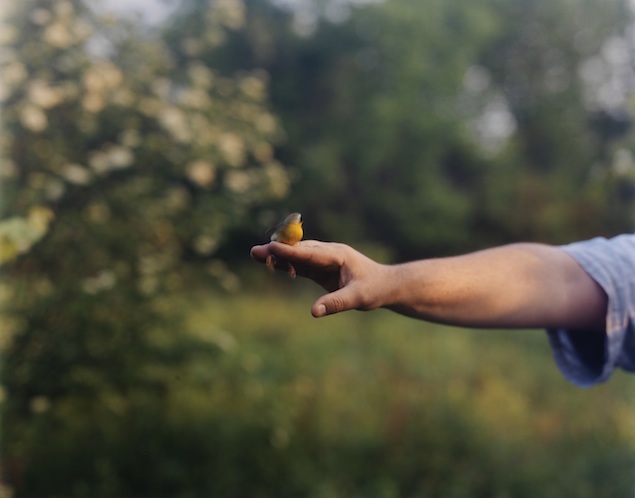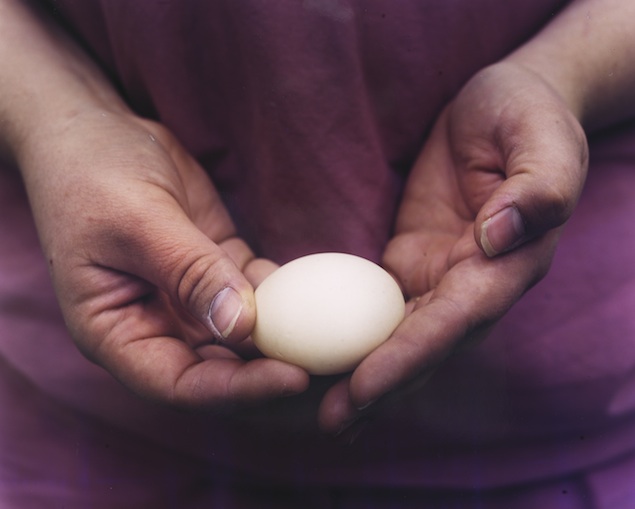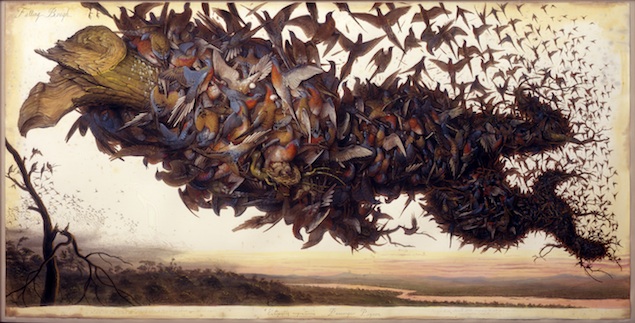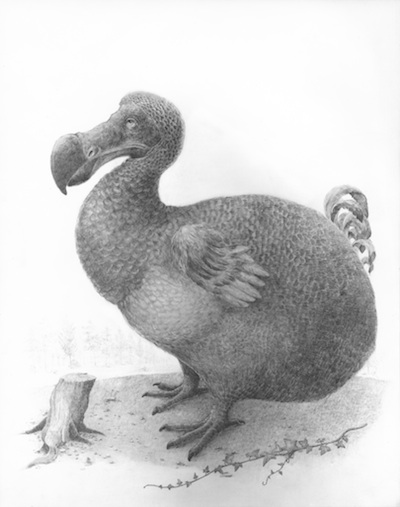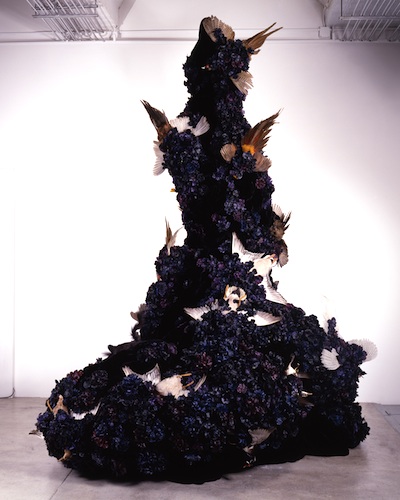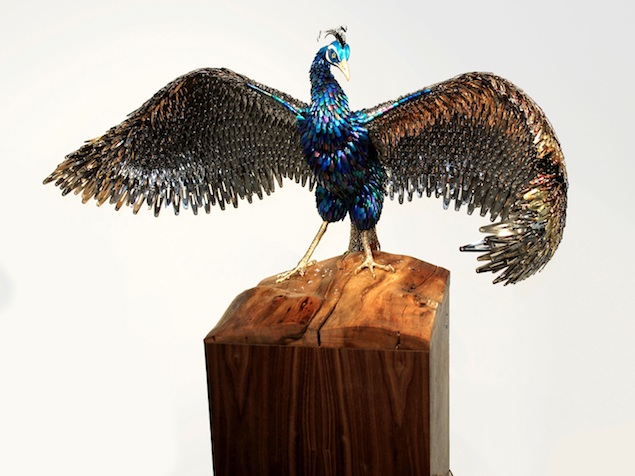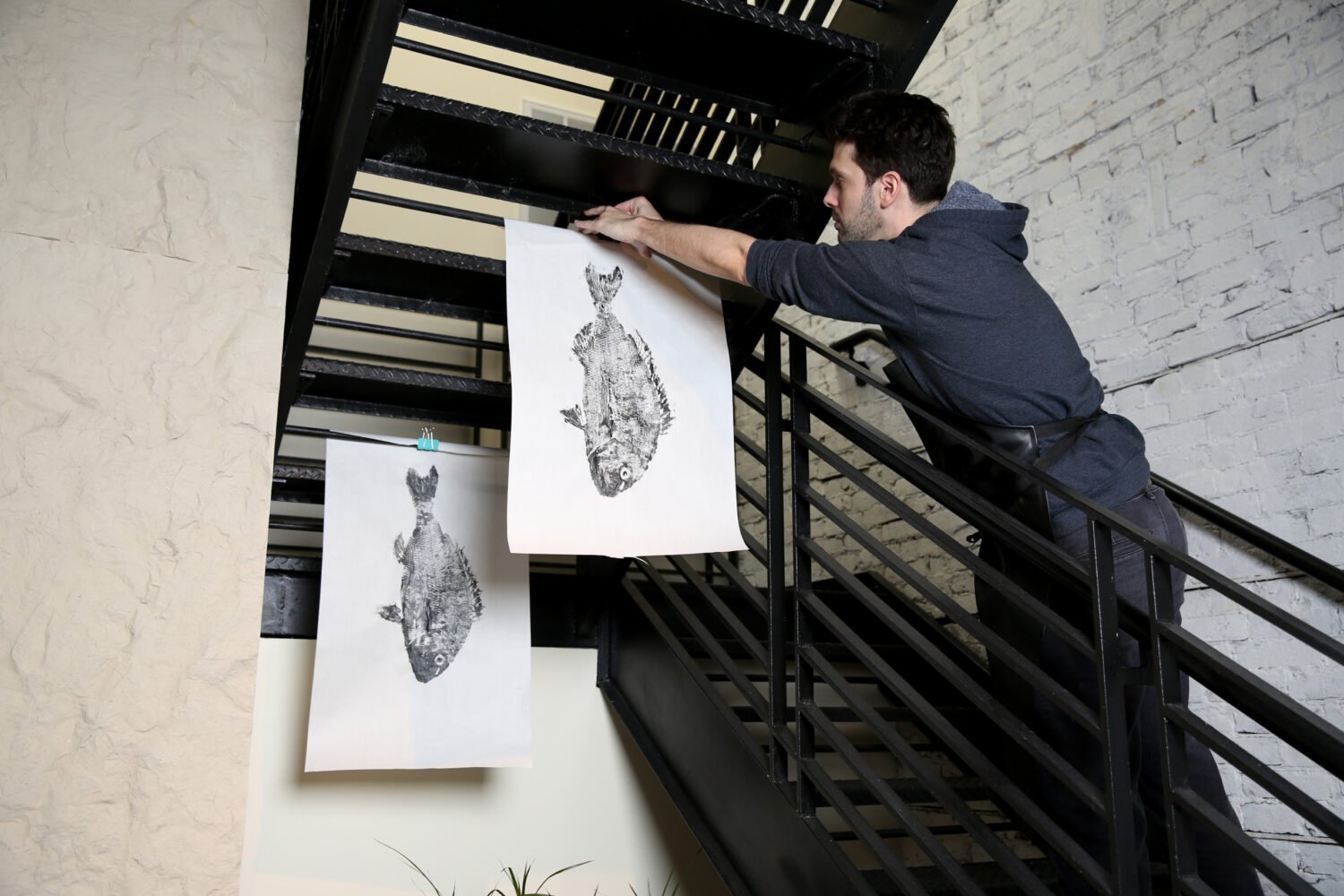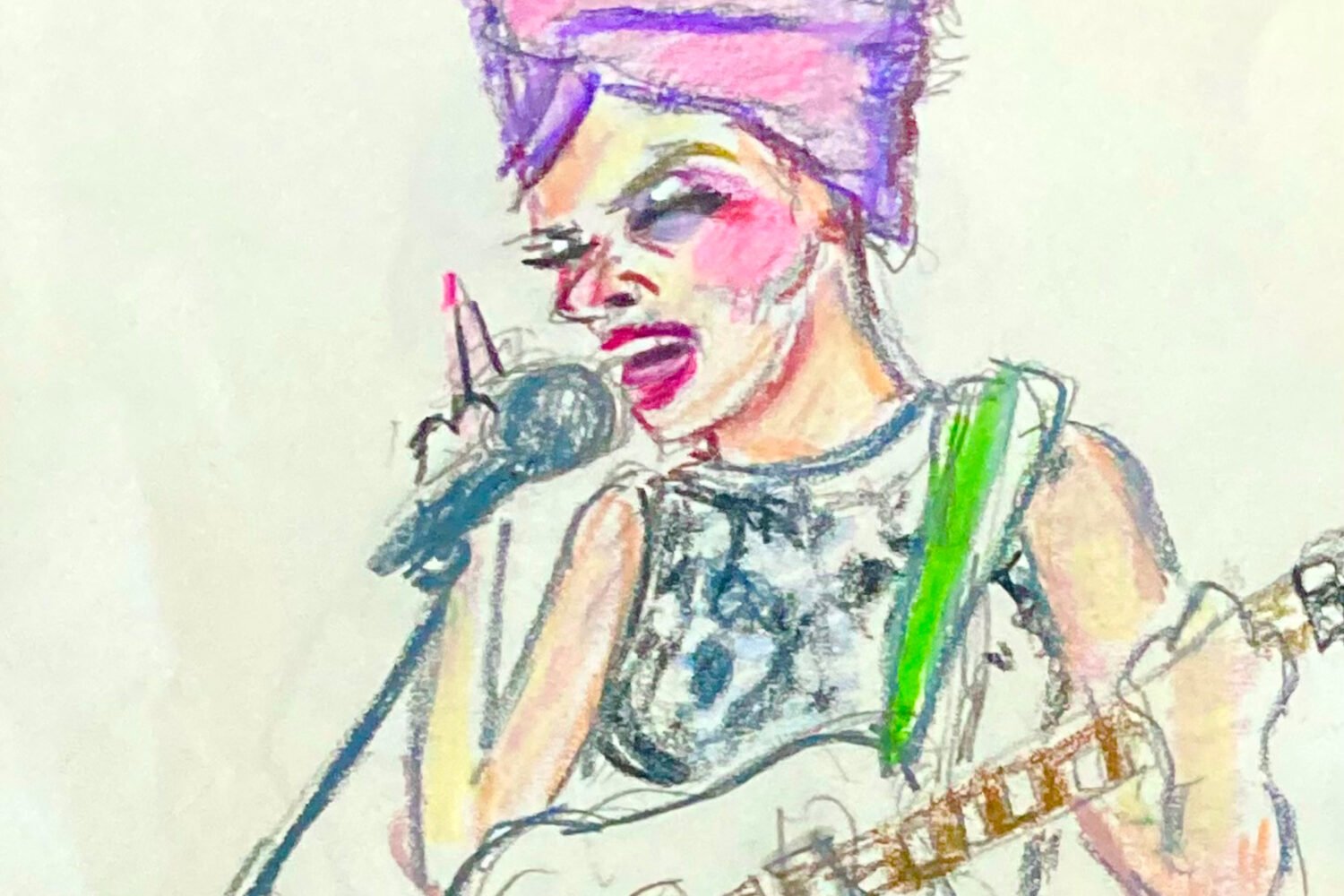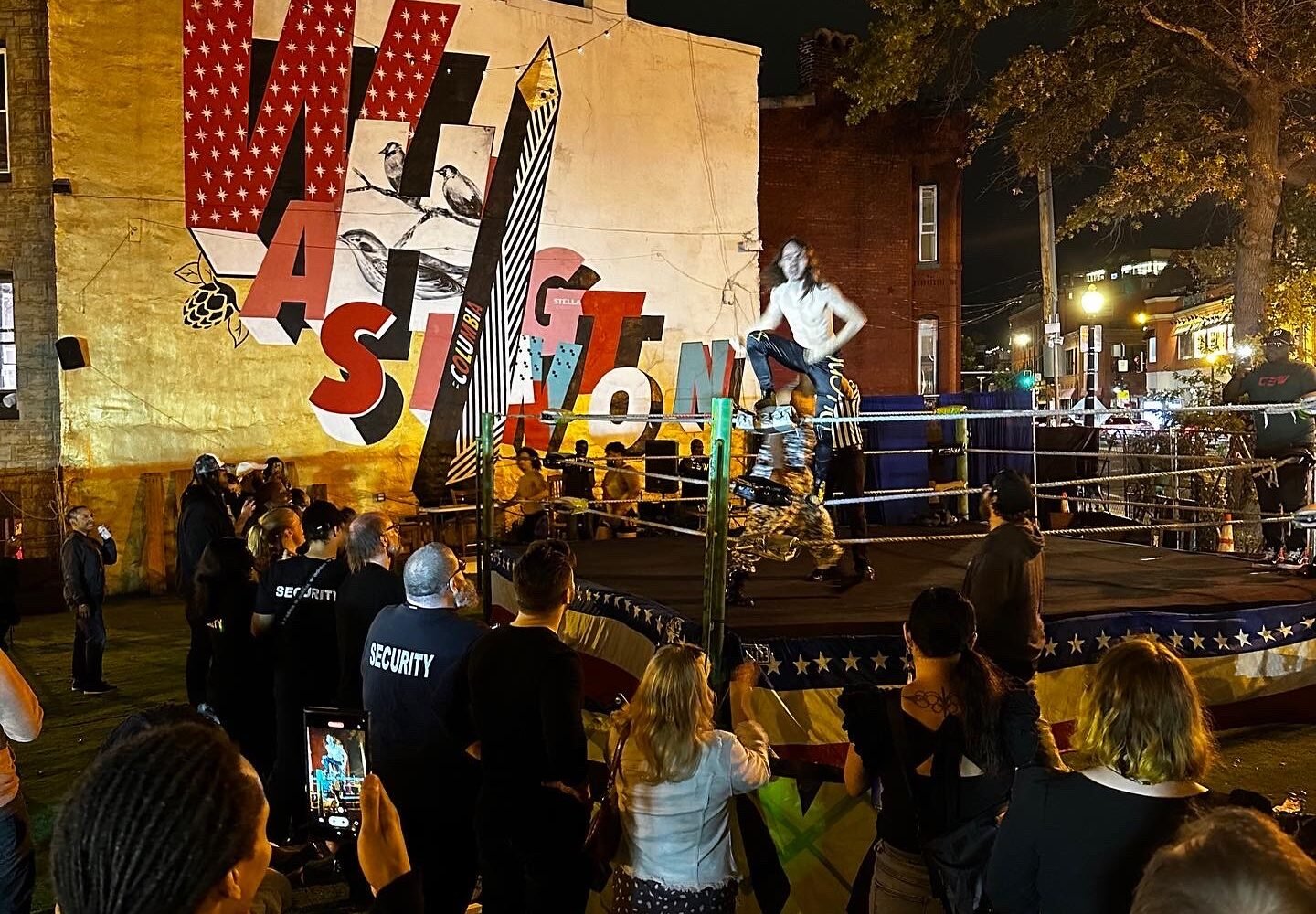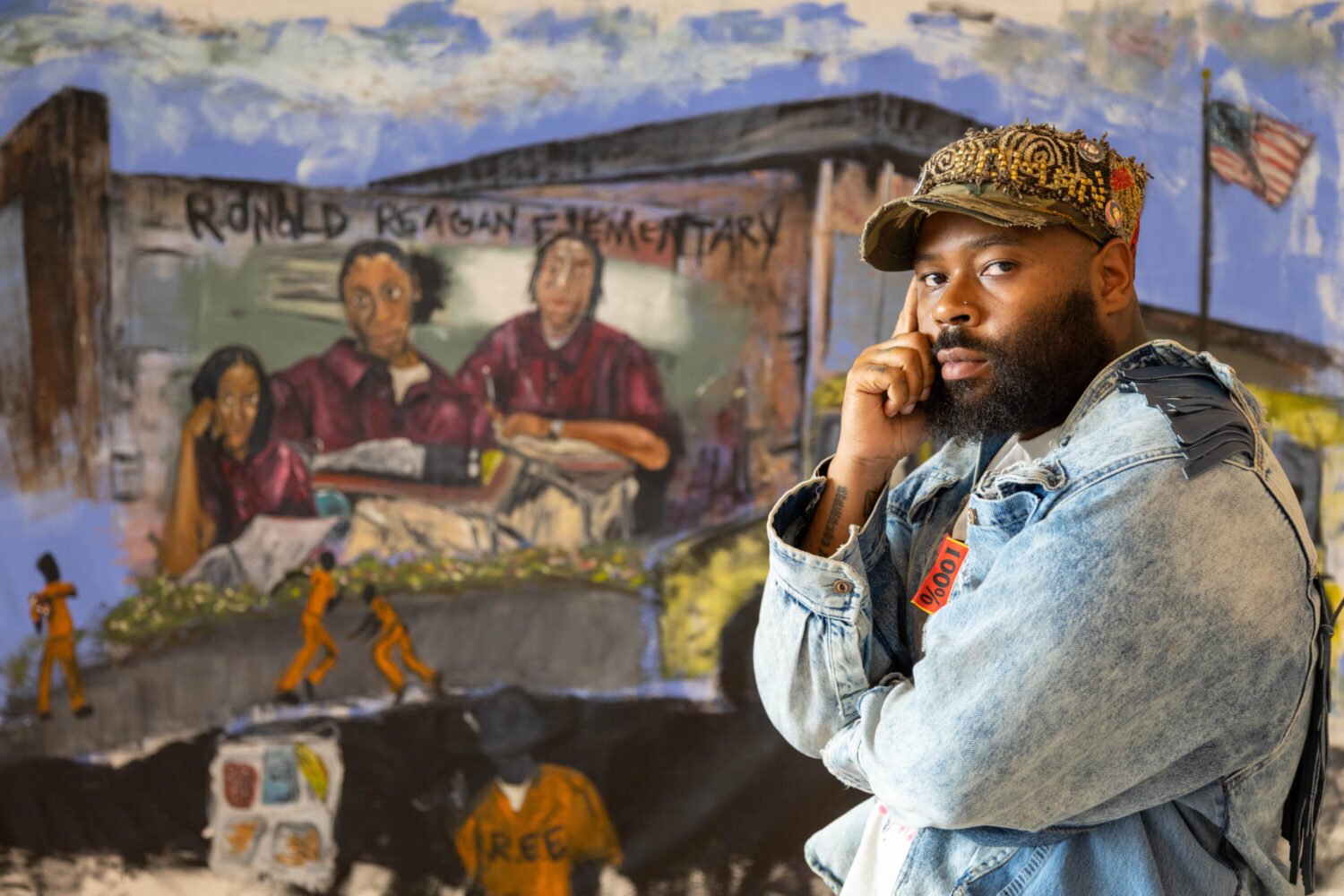Most people’s daily interactions with birds are probably limited to shooing pigeons away from a freshly waxed car or wolfing down a chicken Caesar salad at lunch. But birds of all feathers have been inspiring artists for centuries, a fact the American Art Museum explores in its new exhibit “The Singing and the Silence: Birds in Contemporary Art.” The show, opening Friday, uses a variety of media—paintings, collages, large-scale sculpture installations—to explore how artists choose to depict birds, as well as their relationship to the world and humans’ relationship to them. The exhibit, according to curator Joanna Marsh, takes its name from a line in the poem “The Bird at Dawn” by Harold Monro, the contrast speaking to birds’ dual natures: exotic and commonplace, abundant and endangered.
Some of the most striking works include peacock sculptures by San Francisco artist Laurel Roth Hope. The intricate forms on close examination reveal themselves to be made from drugstore beauty items—glittering wings fashioned from metal hair clips, painted fake fingernails mimicking the birds’ iridescent hues, gold necklaces forming the sweeping tails—drawing a cheeky parallel between the tools women use to beautify themselves and the showy features that allow male peacocks to attract a mate. There are also two large installations by Oklahoma sculptor Petah Coyne constructed of funereally dark silk flowers and cascading black velvet and studded with contorted taxidermied birds, which Marsh says are inspired by Dante’s Divine Comedy.
Though many of the works are fantastical, like Fred Tomaselli’s otherworldly yet playful avian collages, the exhibit also hints at sobering truths about mankind’s destructive relationship to the natural world and the winged creatures who inhabit it. That theme is most evident in a poignant sketch by David Beck of a dodo, the “disastrously trusting” 17th-century bird that died out just 80 years after humans discovered it and has since become a poster animal for extinction. Another bygone species, the passenger pigeon, also features; the last-known of its kind, a specimen named Martha, is on display in the Museum of Natural History, and the 100th anniversary of her death this year was part of the inspiration for the exhibit. The birds appear in the opening work, a wall mural by James Prosek commissioned for the exhibit and called “What once was is no more: Passing like a thought, flight into memory”; and in Rachel Berwick’s haunting “Zugunruhe,” a tree encased in a hexagonal mirrored box, its branches laden with dozens of amber resin birds—created, Marsh explained, from casts of real taxidermied passenger pigeons. (Zugunruhe is a German word describing the restlessness and anxiety birds exhibit before migrating.)
The Smithsonian has a long history with avian-inspired art, owing in part to the proclivities of two of its past secretaries: Spencer Fullerton Baird and S. Dillon Ripley were both ornithologists by profession. “The Singing and the Silence” draws on both that institutional legacy and modern iterations of the artistic tradition to present birds in a way they’re not often seen—and encourage viewers to think of them as more than just a fact of life.
The Singing and the Silence: Birds in Contemporary Art is at the Smithsonian American Art Museum October 31 through February 22. For more information, visit the gallery’s website. See images from the exhibit below.

